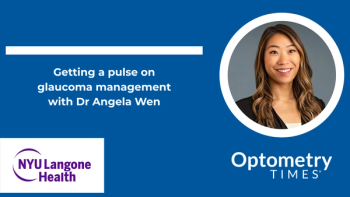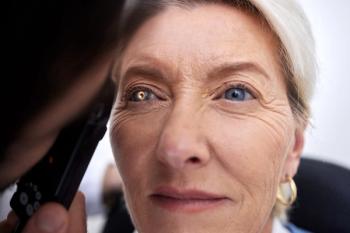
- Optometry Times Vol. 10 No. 11
- Volume 10
- Issue 11
Knowing when to delegate testing responsibilities
Over the years I have read numerous articles concerning the merits-specifically those of more efficient time management-of optometrists delegating more and more tasks to para-professionals, technicians, and scribes.
In my practice
In our two-doctor practice-the other doctor being my father-with our relatively well cross-trained employees, we see patients after they have gone through a preliminary history, visual acuity testing, auto-refraction, and non-contact tonometry.
I think we’re doing things proficiently, considering my grandfather used to bring a patient back to his exam room, perform a refraction-an examination that would have been considered cursory by today’s standards (this was in the ’40s)-and then bring the patient over to a small table to sell him a pair of glasses with no help.
Through conversations with colleagues, I know our practice is somewhere in the middle of the pack as far with delegating the performance of some examination elements to staff.
For example, I know an OD in north Georgia who does everything from patient history to the completion of the examination himself, and I know another doctor in Alabama who doesn’t see the patient until his eyes are dilated.
It essentially comes down to one’s comfort level, which is not always accurately predicted by how long one has been in practice-the OD who does everything himself is younger than the doctor who doesn’t see the patient until he is dilated.
Because about half of my day is spent specifically with glaucoma patients, I will share my typical modus operandi for which glaucoma tests I delegate and which ones I perform myself.
Task delegation
Preliminary history is performed by one of our technicians. I call it “preliminary” because I was taught throughout my didactic training that patient history never ends until the completion of the exam. The same technician also performs visual acuity testing.
Pupil testing, which is performed during all patient encounters, is performed by me personally. If a patient with uncontrolled glaucoma develops a new afferent pupil defect, I want to know that. Not every afferent pupil defect is an easy-to-see grade 4+.
Threshold visual field studies are conducted by one of our technicians. Determining whether a visual field is reliable is relatively straightforward by looking at the amount of fixation errors or false negatives.
However, if a visual field is technically unreliable but reliable enough to plot a blind spot, I consider the field of use from a qualitative standpoint.
I can get a feel for the patient’s field of vision even though the test may not fit neatly into a progression algorithm. In my practice, initial visual field studies showing defects are always repeated later, even if the initial visual field study is reliable.
We handle spectral domain optical coherence tomography (SD-OCT) the same way because looking at the printout will tell the clinician whether a scan is reliable. However, like visual field studies, even scans with low signal strengths can give qualitative information to the astute observer (see Figure 1).
Testing yourself
I personally perform gonioscopy, and it is a test one perhaps not performed as often as it should be, in general.
I personally perform tonometry -by means of applanation tonometry or rebound tonometry if I am unable to applanate-on all my glaucoma patients and glaucoma suspects. I am aware that I may differ from other doctors in that thinking, but I’ve seen several scenarios in which patients’ intraocular pressures (IOPs) have increased from squeezing their eyelids during the test or simply being too apprehensive to relax and breathe.
Several landmark studies that guide how glaucoma should be treated have specifically addressed how low target IOPs should be set.1-3 Just a point or two mm Hg has the potential to matter a great deal.
Another test I always perform myself is corneal pachymetry. The Ocular Hypertension Treatment Study (OHTS) taught us that a thin central corneal thickness is an independent risk factor for the development of glaucoma.1
However, the cornea measuring only about a centimeter in diameter means there is little room for error. Not measuring in the center of the cornea can lead to invalid values that can have tangible effects on glaucoma management.
There exists no metric for ensuring the central cornea has been assessed by a pachymeter. It’s just something I must know for myself.
Finally, I review the patient’s treatment plan myself. While I have the utmost confidence in my staff, I think the patient may feel more compelled to be compliant if a treatment plan comes from me.
Further, if a patient has a question about why he is being treated (or monitored without treatment), I can explain the protocol on the spot by using landmark studies.
There is more than one correct way to handle glaucoma encounters, and I do not assert that my modality is better or worse than any other OD’s. This is how I prefer handling these patient encounters, and I’m interested in how you handle yours.
References:
1. Kass MA, Heuer DK, Higginbotham EJ, Johnson CA, Keltner JL, Miller JP, Parrish RK 2nd, Wilson MR, Gordon MO. The Ocular Hypertension Treatment Study: a randomized trial determines that topical ocular hypotensive medication delays or prevents the onset of primary open-angle glaucoma. Arch Ophthalmol. 2002 Jun;120(6):701-13; discussion 829-30.
2. Anderson DR. Normal Tension Glaucoma Study. Collaborative normal tension glaucoma study. Curr Opin Ophthalmol. 2003 Apr;14(2):86-90.
3. Heijl A, Leske MC, Bengtsson B, Hyman L, Bengtsson B, Hussein M; Early Manifest Glaucoma Trial Group. Reduction of intraocular pressure and glaucoma progression: results from the Early Manifest Glaucoma Trial. Arch Ophthalmol. 2002 Oct;120(10):1268-79.
Articles in this issue
about 7 years ago
How to handle non-ophthalmic emergenciesabout 7 years ago
Q&A: Cornea, almost two residencies, and a Vietnamese hoagieabout 7 years ago
Imaging aids in differential diagnosis of uncommon diseaseabout 7 years ago
Why doctors are rethinking AMD standardsabout 7 years ago
Know the link between cotton wool spot and anemiaabout 7 years ago
How hyperopes differ from myopesabout 7 years ago
When to refer patients with diabetic retinopathyabout 7 years ago
Dialogue with lecturers at CEabout 7 years ago
5 steps to manage cataract patient expectationsNewsletter
Want more insights like this? Subscribe to Optometry Times and get clinical pearls and practice tips delivered straight to your inbox.













































.png)


